Visit Monteriggioni – The Medieval Walled Town Nestled in Tuscany
From Dante Alighieri to the Assassin’s Creed saga, Monteriggioni has been playing with people’s imagination for centuries. It is a perfectly preserved Medieval walled village just 20 km. from Siena in Tuscany, central Italy.
Monteriggioni is a comune in the province of Siena in the Italian region of Tuscany. It borders on the communes of Casole d'Elsa, Castellina in Chianti, Castelnuovo Berardenga, Colle di Val d'Elsa, Poggibonsi, Siena and Sovicille. The town is architecturally and culturally significant; it hosts several piazzas, and is referenced in Dante Alighieri's Divine Comedy.
History of Monteriggioni
Monteriggioni is a medieval walled town, located on a natural hillock, built by the Sienese in 1214–19 as a front line in their wars against Florence, by assuming command of the Via Cassia running through the Val d'Elsa and Val Staggia to the west.
During the conflicts between Siena and Florence in the Middle Ages, the city was strategically placed as a defensive fortification. It also withstood many attacks from both the Florentines and the forces of the Bishop of Volterra. In 1554 the Sienese were able to place control of the town's garrison to Giovannino Zeti, who had been exiled from Florence. In 1554, in an act of reconciliation with the Medicis, Zeti simply handed the keys of the town over to the Medicean forces— considered a "great betrayal" by the town's people.
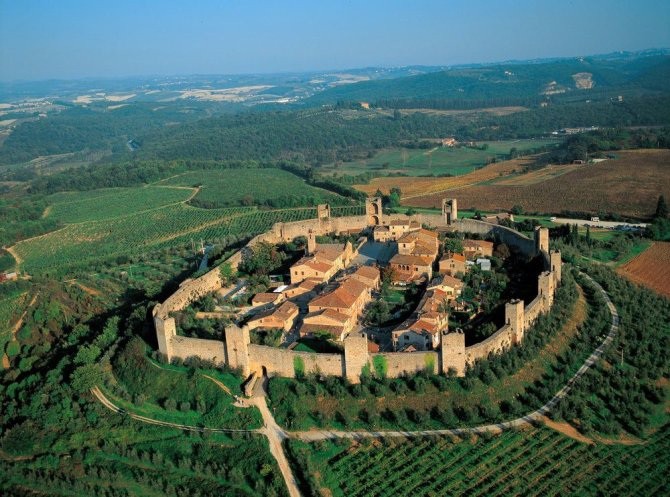 |
| Photo: Places |
Monteriggioni is one of the most impressive walled Medieval towns in Tuscany. It’s the typical fortified village that started its life as a castle, perfectly rounded to suit the hill on which it has stood since the beginning of 1200. Today its mighty towers can still be seen for miles. Towers that once impressed Dante Alighieri so much that in his Divine Comedy he compared them to “horrific giants”.
This was a good spot on the Via Francigena from which to control the disputed border territory between Florence and Siena. After the victory at Montaperti in 1260 the fortifications were extended and the walls of the castle strengthened with the 14 towers. The castle was finally lost to Florence in 1554 and the following year Siena and all its territory was taken over by the Medici’s Signoria.
What to see and do in Monteriggioni, Tuscany, Italy
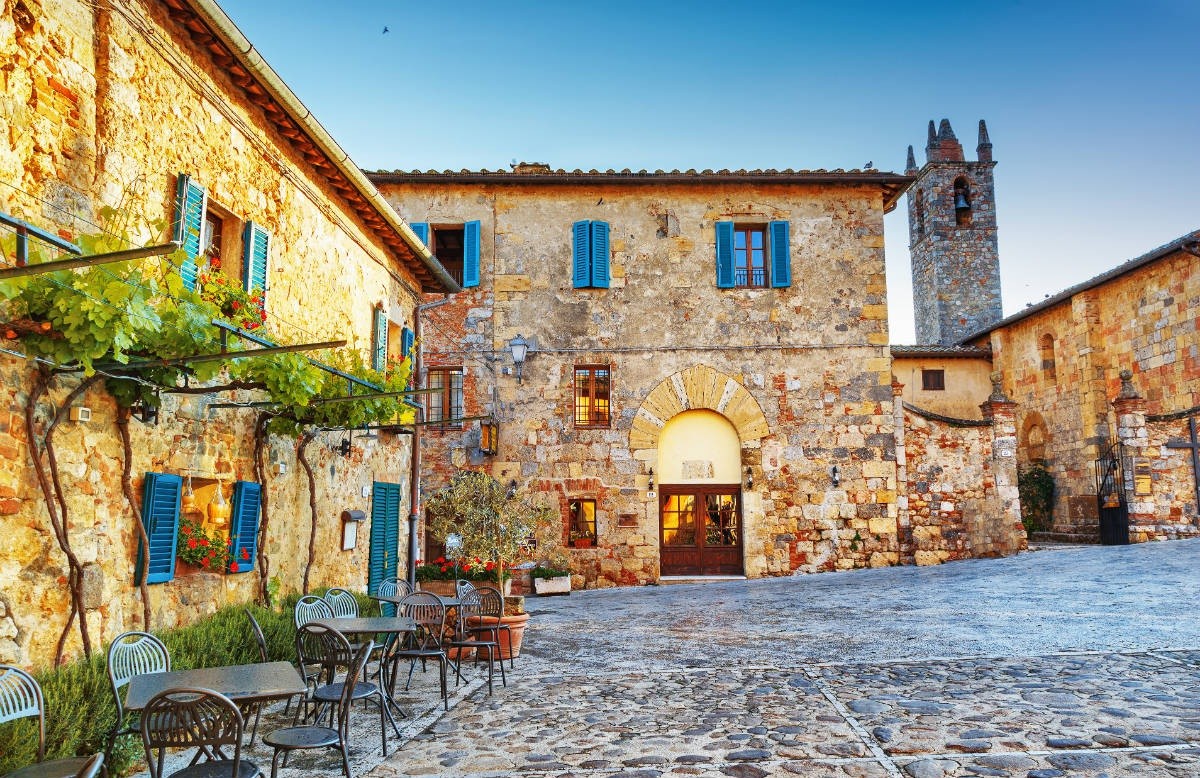 |
| Photo: Places |
The roughly circular walls, totalling a length of about 570 metres (1,870 ft) and following the natural contours of the hill, were built between 1213 and 1219. There are 14 towers on square bases set at equidistance, and two portals or gates. One gate, the Porta Fiorentina opens toward Florence to the north, and the other, the Porta Romana, faces Rome to the south. The main street within the walls connects the two gates in a roughly straight line.
The main town square, the Piazza Roma, is dominated by a Romanesque church with a simple, plain façade. Other houses, some in the Renaissance style (once owned by local nobles, gentry and wealthy merchants) face into the piazza. Off the main piazza smaller streets give way to public gardens fronted by the other houses and small businesses of the town. In more hostile times, these gardens provided vital sustenance when enemies gathered around the walls during sieges.
Other sights in the town's countryside include:
Badia of Santi Salvatore e Cirino in Abbadia a Isola, a Romanesque abbey from the mid-12th century.
*Romanesque church of San Lorenzo in Colle Ciupi
*Romanesque Pieve of Santa Maria a Castello, known since as early as 971
*Romanesque-Gothic hermitage of San Leonardo al Lago
*Villa Santa Colomba
Armoury Museum
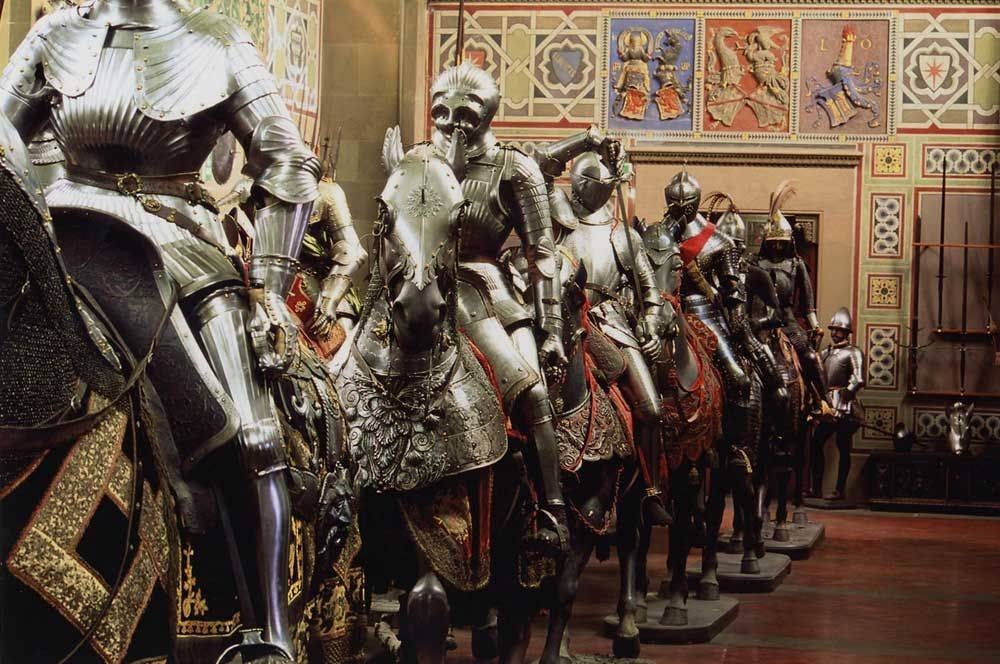 |
| Military Review |
This museum houses faithful reproductions of medieval and Renaissance weapons and armour. Accurate models also illustrate siege engines and siege techniques is use in the same periods.
Each room is devoted to a specific moment in the history of Monteriggioni, and the items on display for each period are placed in their proper context.
Visitors can enjoy the unusual experience of handling and trying on some weapons and pieces of armour, situated in special parts of the museum. Information panels, and an easy-to-use multi-lingual audio guide, accompany the visitor on this brief but impressive immersion in history.
Church of Santa Maria Assunta
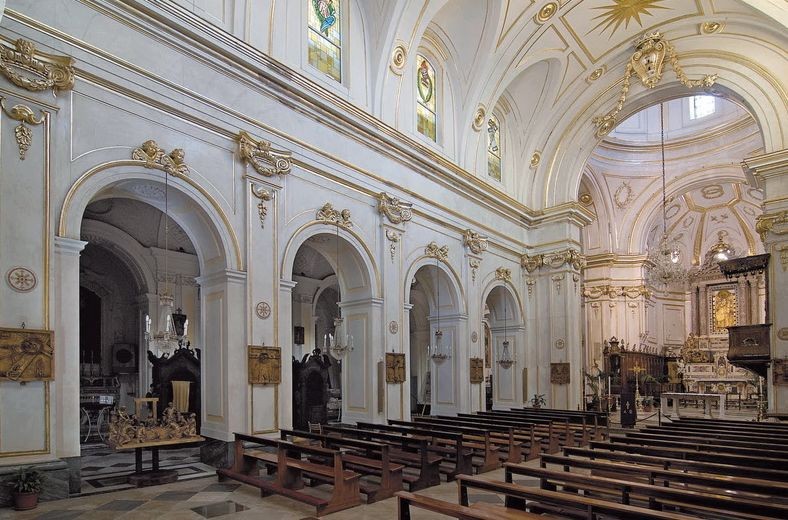 |
| Austria-Forum |
The Church of St Maria Assunta in Positano used to be a great example of Medieval art, whose history was deeply bound with the Benedictine monastery of St Maria. According to the legend the monastery was erected in honour of a Byzantine icon representing the Virgin Mary, which is still venerated by the locals.
The abbey had a certain prestige until the first half of the XV century, when the last Benedictine abbot Antonio Acciappaccia di Sorrento and his monks, tired of being robbed by violent plunderers coming from the Cilento coast, left the monastery.
A few years later the church was assigned to Nicola Miroballi, commendatory abbot and later named archbishop of Amalfi. Apart from some exceptions, the "commendatory abbots age" was generally fateful: in spite of the restoration works made at the beginning of the XVII century, the church went gradually to ruins. The local clergy deprived the last commendatory abbot, Liborio Marra, of his power and started the real restoration works in 1777. The works finally ended in 1783, and the Virgin's icon was crowned with a gold crown.
 |
| Religiana |
Very probably the Benedictine monks, who run on board of their ships across commercial and fishing routes all along the south of Italy, carried the Byzantine icon in Positano during the XII century. A small parchment, preserved into the church archive, reports that Giovanni II Bishop of Amalfi in 1159, dedicated the church to the Blessed Virgin Mary.
The legend says instead, that a prodigious phenomenon brought the icon to Positano. It was part of a sailing ship coming from the East that, landed in Positano, got into a dead calm and stopped there. After numerous attempts to go on, at some point the sailors heard a voice saying: "rest, rest". The captain interpreted that prodigy as the want of the Virgin to stay there and decided to land. At that point the ship started moving again. Once landed the sailors gave the icon to the locals, who erected a temple in honour of the Virgin and elected her Patron of the village.
The current look of the church dates back to the last restoration works, finished in 1783. St Maria Assunta has a nave and two side aisles, five side arches and chapels. Walking from the entrance to the high altar, follow one another the chapels of St Biagio, Immacolata, St Antonio and St Anna. On the right end you will admire the Circumcision altar with a beautiful painting made by Fabrizio Santafede, in 1599. On the right side of the high altar you will find the Chapel of St Stefano, that preserves the eighteenth-century ligneous statue representing the Virgin with the Infant Jesus.
Monteriggioni Medieval festival at the beginning of July is one of the most popular festivals in Tuscany: the town dresses itself up in Medieval finery. There are games, falconry displays and food stalls.
If it’s Medieval charm you’re after, check our post with more recommendations about the best of Tuscany’s hilltop towns in the province of Florence.
Cultural significance
The Tuscan poet Dante Alighieri used the turrets of Monteriggioni to evoke the sight of the ring of giants encircling the Infernal abyss.
As with circling round
Of turrets, Monteriggioni crowns his walls;
E’en thus the shore, encompassing the abyss,
Was turreted with giants, half their length
Uprearing, horrible, whom Jove from heaven
Yet threatens, when his muttering thunder rolls.
Monteriggioni also plays a significant role in the games Assassin's Creed II and Assassin's Creed: Brotherhood, both of which are loosely based around certain key historical events in Renaissance Italy. It is home to protagonist Ezio Auditore, and his uncle Mario, who lives in the fictional Villa Auditore.
Assassin’s Creed: live the game in MonteriggioniIf you’re a fan of the game, this castle is the place where the magnificent feats of Ezio Auditore are set. You’ll recognise the powerful outer walls that for centuries resisted the attacks of the Florentines, and you’ll even be able to walk along them like a warrior of old. Entering the Armoury Museum, you’ll feel like you’re in the armoury of Ezio’s villa, and what it’s like to be in the “shoes” of a legendary knight. |
 | Explore Top 7 Wonderful and Must-Visit Wildlife Hot-Spots in Southeast Asia From Komodo National Park in Indonesia to Ba Be National Park, these wonderful places have some of the world's most facisnating wildlife that will amaze ... |
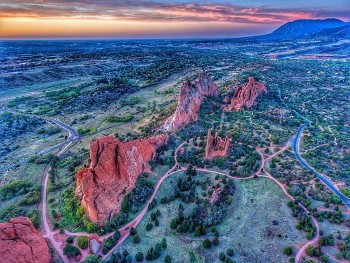 | Step Into The Wilderness: Visit The Mesmerizing “Garden of The Gods” Garden of the Gods, a mesmerizing public park with 300-million-year old sandstone rock formations, is a famous destination in the United States. |
 | Visit Mrauk U - The Dreamy Forgotten Heaven of Myanmar As a forgotten heaven, Mrauk U is a hidden ancient city that is nestled in a quite place in Myanmar, where its beauty and mysteries ... |
Recommended
 Travel
Travel
Vietnam Through Australian Eyes: Land of Flavor, Warmth, and Timeless Charm
 Travel
Travel
Strategies for Sustainable Growth of Vietnam’s Tourism from International Markets
 Travel
Travel
Vietnam Strengthens Its Presence On The Global Tourism Map
 Multimedia
Multimedia
Phong Nha-Ke Bang National Park Named Top Adventure Travel Site
Popular article
 Travel
Travel
Vietnam Welcomes Record-High Number of International Visitors
 Travel
Travel
Luxury Train From Hanoi To Hai Phong To Be Launched In May
 Travel
Travel
Phong Nha Named Top Budget-Friendly Travel Destination for Spring 2025: Agoda
 Travel
Travel







